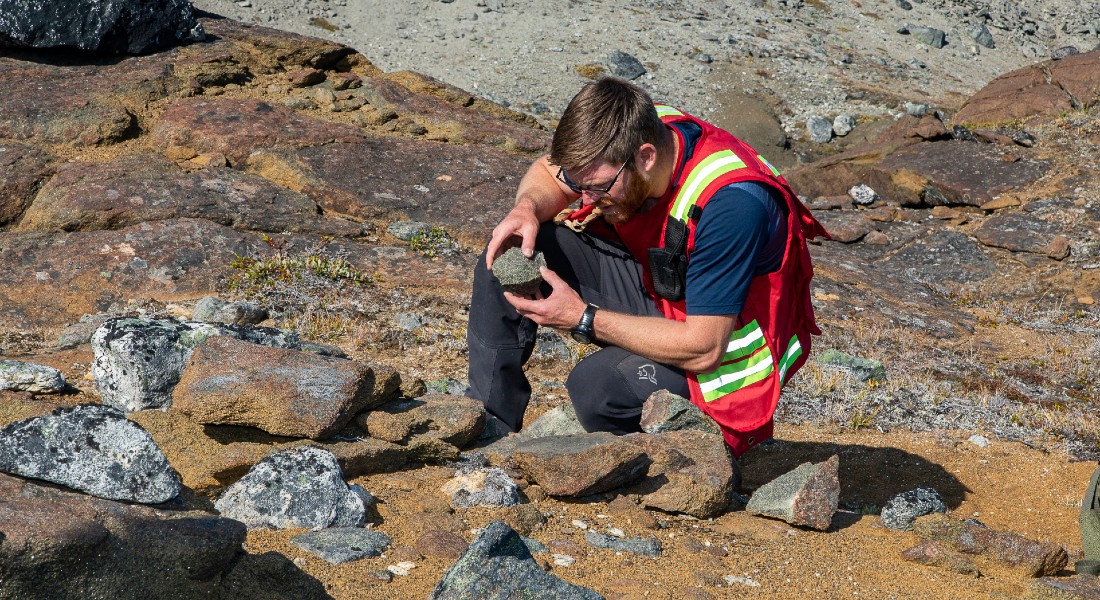Olivine has an astonishing ability to sequester atmospheric CO2 whenever it is expelled from Earth's depths via tectonic processes. Now, a University of Copenhagen researcher is working to recreate the mineral's magic in the lab - an effort that could contribute to solving our climate crisis.

Encased in peridotite rock six kilometers beneath the Earth's surface, one can find a green and widely occurring mineral - olivine. While olivine contains nickel, used in steel production and batteries, research shows that the mineral also holds an incredible potential to address our climate crisis.
According to UCPH researcher Kristoffer Szilas, olivine can indeed remove CO2 from the atmosphere. Szilas recently received DKK 2.9 million from Independent Research Fund Denmark to study how it can be used to reduce greenhouse gases.
"Once tectonic processes drive olivine up from beneath the Earth's surface, the mineral becomes unstable and reacts with wind and weather. Once exposed, the olivine absorbs atmospheric CO2 and gets converted, through mineralization, into a magnesium carbonate mineral called magnesite. Thus, the CO2 is sequestered in the new mineral instead of remaining in the atmosphere as a gas," explains Kristoffer Szilas, an assistant professor at the University of Copenhagen's Department of Geosciences and Natural Resource Management.
Researchers have long been aware of olivine's incredible properties. But now, Kristoffer Szilas is working to recreate the mineral's magic natural process by which CO2 is removed from the atmosphere in the laboratory. Should the mineral enthusiast's mission succeed, it could have an exceptionally positive impact on climate.
"For every 1,000 kg of olivine, 600 kg of CO2 can be sequestered and removed from our atmosphere. And since olivine is found in peridotite rock, which accounts for 80 percent of Earth's volume, the use of this mineral has huge potential for our climate," says Kristoffer Szilas.
Just one percent of CO2 by weight stored in Oman could solve the climate crisis
The Sultanate of Oman, located along the southeastern corner of the Saudi Arabian Peninsula, has the largest concentration of olivine containing peridotite rock on Earth.
If we could add just one percent of CO2 by weight (weight of mass) to the peridotite rock in Oman, the climate problem would be solved. According to Assistant Professor Szilas, the mass of CO2 that could potentially be absorbed in Oman in this way is equivalent to a quarter of the total amount of carbon dioxide in Earth's atmosphere.
Szilas explains that one of the ways to facilitate this process could be by dissolving CO2 in water and pumping it into the peridotite rich mountains. There, the olivine would react with the CO2, causing it to mineralize and subsequently be partially stored within the underground rock.
"Hypothetically, this mineral allows us to solve the climate crisis. The question is whether the process can be scaled up and whether the reaction would be quick enough. This is what I'm trying to figure out with my research project," says Szilas.
He emphasizes that success would require for the research team to replicate olivine's natural CO2 storage process in a speedy and efficient way. Furthermore, the method needs be tested in greenhouse gas emitting industries.
"I hope that, at a later stage of the project, I will be able to test the effect of the mineral together with large industrial partners and integrate the mechanism into their normal procedures. For example, if one could develop a way to get smoke from power plants to react directly with olivine, a plant's CO2 emissions could be halted without curbing production," concludes Szilas.






